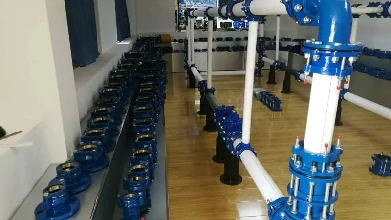Wafer Type Butterfly Valve for Efficient Flow Control Solutions in Various Applications
Valve Butterfly Wafer An Overview
The valve butterfly wafer is a crucial component in modern industrial applications, particularly in fluid control systems
. Designed for efficient flow regulation, the butterfly valve uses a simple yet effective mechanism that allows for quick and precise adjustments to flow rates. Understanding its design, functionality, and applications can greatly enhance its utilization across various sectors.A butterfly valve operates via a circular disc that rotates about a vertical axis; when the disc is perpendicular to the flow, it blocks the fluid, and when parallel, it allows flow. The wafer style refers to the valve's design, which is sandwiched between two flanges of pipes. This design is advantageous for its lightweight, compact structure, making it easier to install and maintain compared to traditional valve types.
One of the primary benefits of the butterfly wafer valve is its cost-effectiveness. The streamlined design requires fewer materials and less labor for installation, reducing overall expenses. Additionally, the butterfly valve typically has a lower pressure drop compared to globe or gate valves, making it an efficient choice for controlling flow in a system.
valve butterfly wafer

Butterfly valves are widely used in various industries, including water treatment, food and beverage, oil and gas, and HVAC systems. In water treatment, for example, they facilitate the management of flow and pressure, ensuring efficient operations. In the food and beverage sector, the sanitary design of butterfly valves complies with health regulations, allowing for safe transport of liquids.
There are different types of butterfly valves, including resilient seated, high-performance, and triple offset. Resilient seated valves are commonly used for low-pressure applications, while high-performance valves are mainly utilized in applications requiring higher temperatures and pressures. Triple offset butterfly valves, known for their durability and leakage prevention, are ideal for critical processes such as those found in the oil and gas industry.
Maintenance of butterfly wafer valves is generally straightforward, with periodic inspections to ensure optimal performance. Regular checks for wear and tear on seals and discs can prevent leaks and prolong the lifespan of the valve.
In conclusion, the valve butterfly wafer stands out in the realm of fluid control solutions due to its simplicity, efficiency, and versatility. Whether for industrial, commercial, or municipal applications, its significance cannot be overstated. As industries continue to evolve, the demand for reliable flow control mechanisms like the butterfly wafer valve will remain paramount in achieving operational efficiency.
-
The Smarter Choice for Pedestrian AreasNewsJun.30,2025
-
The Gold Standard in Round Drain CoversNewsJun.30,2025
-
The Gold Standard in Manhole Cover SystemsNewsJun.30,2025
-
Superior Drainage Solutions with Premium Gully GratesNewsJun.30,2025
-
Superior Drainage Solutions for Global InfrastructureNewsJun.30,2025
-
Square Manhole Solutions for Modern InfrastructureNewsJun.30,2025
-
Premium Manhole Covers for Modern InfrastructureNewsJun.30,2025
